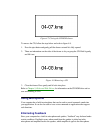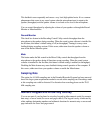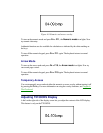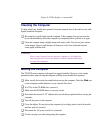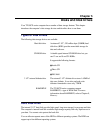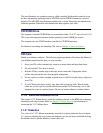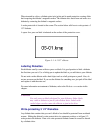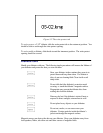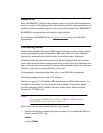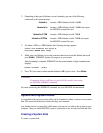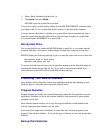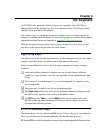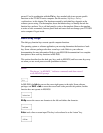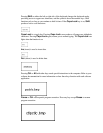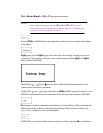
RAMDRIVE
Since a RAMDRIVE, is created in the computer’s memory it provides almost instantaneous
access to your data. Unlike physical disks, which must be spun like a phonograph record and
searched for data, no mechanical process is involved in retrieving data from a RAMDRIVE.
RAMDRIVEs are formatted and used similarly to physical disks.
For information on RAMDRIVE refer to Chapter 9, Memory and to your MS-DOS
documentation.
Formatting Disks
Diskette Drives and Hard Disk Drives (HDD) function like tape recorders, reading, writing,
and erasing magnetically encoded information. Both types of disk drives have read/write
heads that are positioned across the disk surface to record and retrieve information.
Formatting enables the read/write heads to locate data by dividing the disk into concentric
circles called tracks and further dividing the tracks into sectors. Each item of information on a
disk is stored and retrieved according to its unique address identified by the track and sector.
Therefore, a disk must be formatted before it can be used.
For information on formatting the hard disk, refer to your MS-DOS documentation.
The following explains how to format 3 1/2” diskettes.
There are two types of 3 1/2” diskettes: 2HD (high density) and 2DD (double density). An
inscription on the diskette’s cover indicates the kind of diskette. A high density diskette
should be formatted to hold 1.44MB of data and a double density diskette should be
formatted for 720 MB of data.
NOTE
If you format a 2DD diskette to hold 1.44MB or a 2HD diskette to
hold 720KB, an error message is displayed.
Follow these steps to format a diskette from the system prompt:
1. Switch to the directory containing the format command. If you installed MS-DOS in a
directory named “DOS,” type:
cd\dos
and press Enter.



